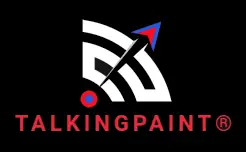As things are winding down to the end of the year, many companies take time look at their balance sheet over the past 12 months and plan for improvements and growth over the next year.
Efficiency improvements can include everything from how you’re meeting corporate sustainability objectives to how to eliminate problems like corrosion or building energy loss that have been long-term challenges.
Companies that adopt a culture of continuous improvement gain a competitive edge and are often the first to take advantage of new technologies that can help them streamline operations and reduce costs.
Here are several advantages of regularly evaluating where efficiency improvements can be made:
- Increased productivity
- Improved product/service quality
- Reduced costs
- Decreased delivery time
- Improved employee satisfaction
- Lower employee turnover rate
- Improved company sustainability
As you’re planning for projects that can improve your efficiency and reduce costs in 2020 and beyond, here are the key steps in the process that can guide you.
Steps for Your Efficiency Review
Step 1: Review the Data
To identify areas of improvement that will be most impactful for your company in 2020, you first want to renew the data, and that means both the numbers and what your employees have to say.
For example, if you’re only looking at a spreadsheet that tells you call wait time is too long for your customers, you may think you need to hire more customer service staff. But if you talk to your team, you might find out that it’s software, not personnel that is the problem, so a change in your CRM app may actually be the answer.
In any organization, there are going to be multiple areas that can be optimized, but you may not be able to budget all of them, so look for the biggest cost savers first.
Some of the standard areas of improvement that give the biggest bang for the buck include:
- Improving energy efficiency (Clients that use our insulation coatings typically report savings of 15%-30% or more)
- Reducing maintenance costs (preventing corrosion, choosing materials with longer lifespans, etc.)
- Improving worker productivity (cloud-based collaboration platforms, addressing personnel safety, etc.)
Step 2: Choose Your Strategies
From the data that you collect on different ares of your operations, you’ll next want to prioritize the initiatives you’ll be trying, price them out and get a cost/benefit analysis.
Once you’ve chosen the efficiency initiatives that make the most sense to implement in 2020, map out your implementation timeframe and the key performance indicators (KPIs) you’re going to use to measure effectiveness.
Step 3: Roll Out Your Efficiency Improvements
Share your rollout plans with employees and managers well ahead of implementation so they’re not blindsided by abrupt changes in their workflow and so they’ll also know the reasoning behind a new efficiency strategy.
Roll out improvements according to your schedule, and build in some flexibility for any bumps that may come along the way.
Step 4: Evaluate Your Success
Some improvement projects can take longer to produce results than expected, while others may offer more benefit than you envisioned. You want to be sure to evaluate your improvement strategies at regular intervals (perhaps quarterly) to make sure you’re getting the benefit you expected and, if so, drill down into that positive return in other areas of your operations.
Let Syneffex™ Help You with Energy Efficiency Improvements!
From the energy used to heat ovens and tanks to the heating and cooling bills for buildings, Syneffex™ technology can help you reduce energy costs significantly while also providing other value-added benefits.




